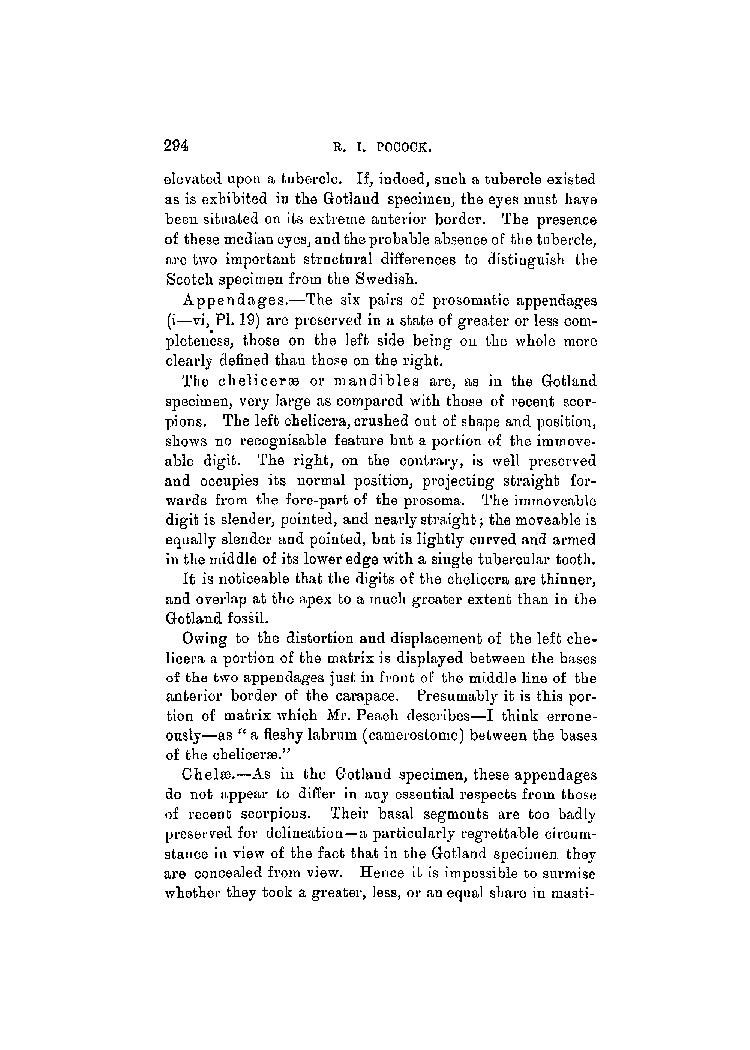elevated upon a tubercle. If, indeed, such a tubercle existed as is exhibited in the Gotland specimen, the eyes must have been situated on its extreme anterior border. The presence of these median eyes, and the probable absence of the tubercle, are two important structural differences to distinguish the Scotch specimen from the Swedish.
Appendages.—The six pairs of prosomatic appendages (i—vi, Pl. 19) are preserved in a state of greater or less completeness, those on the left side being on the whole more clearly defined than those on the right.
The cheliceræ or mandibles are, as in the Gotland specimen, very large as compared with those of recent scorpions. The left chelicera, crushed out of shape and position, shows no recognisable feature but a portion of the immoveable digit. The right, on the contrary, is well preserved and occupies its normal position, projecting straight forwards from the fore-part of the prosoma. The immoveable digit is slender, pointed, and nearly straight; the moveable is equally slender and pointed, but is lightly curved and armed in the middle of its lower edge with a single tubercular tooth.
It is noticeable that the digits of the chelicera are thinner, and overlap at the apex to a much greater extent than in the Gotland fossil.
Owing to the distortion and displacement of the left chelicera a portion of the matrix is displayed between the bases of the two appendages just in front of the middle line of the anterior border of the carapace. Presumably it is this portion of matrix which Mr. Peach describes—I think erroneously—as "a fleshy labrum (camerostome) between the bases of the cheliceræ."
Chelæ.—As in the Gotland specimen, these appendages do not appear to differ in any essential respects from those of recent scorpions. Their basal segments are too badly preserved for delineation—a particularly regrettable circumstance in view of the fact that in the Gotland specimen they are concealed from view. Hence it is impossible to surmise whether they took a greater, less, or an equal share in masti-
